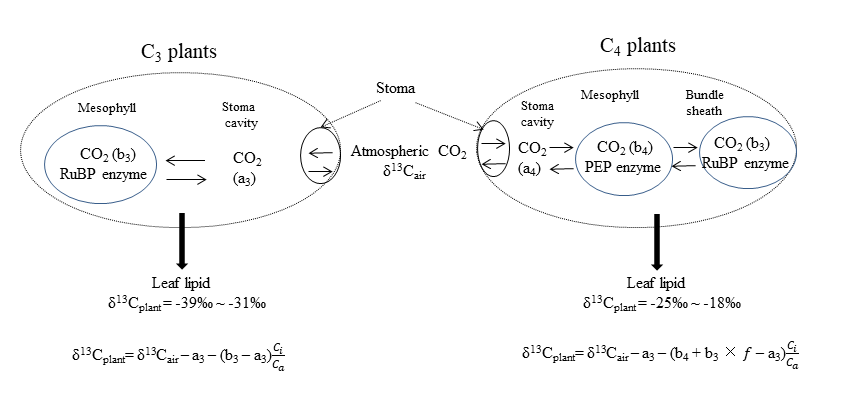Leaf wax biomarker, extracted from the natural archives, is widely utilized to reveal paleo-hydroclimatic changes by paleoscientists. For example, the carbon isotopes of leaf wax n-alkanes (δ13C) are well recognized because of excellent preservation of isotopic composition in soil and lake sediments.
Numerous field-investigated studies have reported that leaf wax n-alkane δ13C values vary significantly within photosynthetic pathways (C3 vs. C4), or among plant types (dicots, monocots, gymnosperms, magnoliids). However, a systematic global analysis of plant n-alkane δ13C values with respect to major plant groups (C3 vs. C4; dicots, monocots, gymnosperms, magnoliids) is still lacking.
A recent research led by associated professor LIU Jinzhao from State Key Laboratory of Loess and Quaternary Geology, Institute of Earth Environment, Chinese Academy of Sciences (IEECAS) published in Earth Science Reviews.
The researches investigated the variations in n-alkane δ13C values with major plant groups, and analyzed the responses of n-alkane δ13C values among plant groups to precipitation amount and temperature, by compiling available leaf wax n-alkane δ13C data at the global scale.
The mechanism underlying different responses of n-alkane δ13C values to precipitation amount and temperature was given. This work showed that the “plant type effect” in leaf wax n-alkane carbon isotopes doesid exist at the global scale, and different responses of leaf wax n-alkane carbon isotopes among plant groups to precipitation amount and temperature.
Thus, it is of great necessity to consider “plant type effect” when leaf wax carbon isotopes in sediments can be used for paleohydroclimatic reconstruction.

Fig. 1 The mechanism for explaining different responses of n-alkane δ13Cwt values between C3 and C4 plants to precipitation amount and temperature (Modified from Lin, 2013).
Contact: Bai Jie, Institute of Earth Environment, Chinese Academy of Sciences, Xi'an, China. Email: baijie@ieecas.cn
 © 2015 Institute of Earth Environment,CAS
© 2015 Institute of Earth Environment,CAS Address:No. 97 Yanxiang Road, Xi'an 710061, Shaanxi, China

 Location :
Location :